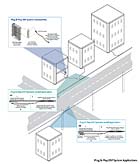
Figure 1A – Aerial Plug & Play OSP System Deployment Example
Recent advancements in physical security technologies have led to the deployment of more effective security solutions. The success of these technologies combined with the convergence of security networks with the extremely innovative information technology (IT) world has created a snowball effect of innovation. While network cameras, analytic software, digital storage and total Internet Protocol (IP) convergence have grabbed most of the headlines, there have also been significant advancements in the optical connectivity designed to physically link these devices.

Figure 1B – Buried Plug & Play OSP System Deployment Example
Why optical
Given the rate of technological advancement, it is impossible to predict the products and applications that will be available even a few years from now. The clear trend now, however, is intelligent pro-active systems. This is likely to continue, as prevention prevails as the number one priority of security systems. The proactive nature of these systems increases the importance of both the speed and the integrity of the transmitted data throughout the system. Optical fiber unquestionably provides the highest degree of reliability and performance relative to alternative transmission media.A key advantage of optical fiber over other transmission media is its immunity to EMI, RFI and environmental effects such as lightning. From a security perspective, optical fiber is an attractive solution because it is much more difficult to tap into optical systems than copper systems. Optical product manufacturers have developed an array of cabling and connectivity solutions engineered and designed to meet the exacting mechanical and environmental requirements of each unique scenario. The transmission properties of optical fiber and robustness of optical cabling systems ensure optimal data transmission in a proactive security/surveillance environment.
Another important advantage of optical fiber is distance and bandwidth capabilities. Multimode and single-mode fibers continue to provide distance and bandwidth capabilities far superior to copper and wireless solutions. This bandwidth advantage provides the flexibility to deploy new and advanced technologies as they become necessary and available. It also eliminates the need to re-cable when new devices surpass the limitations of existing equipment. In many instances, the cost of installing new cable exceeds that of the actual security technology being deployed. Optical fiber provides a future-proofed infrastructure, as well as offers the highest performance, most secure solution and greatest degree of flexibility to cost-effectively deploy future technologies.

Plug-and-Play
Plug-and-play Outside Plant (OSP) systems provide a cost-effective method of deploying optical fiber in the outside plant environment significantly faster than traditional field installations. The system utilizes standard optical fiber cables upon which tether attachment points (TAPs) are preinstalled at customer-specified locations along the length of the cable. The cable and tether attachment points are tested and shipped as a complete system.Compatible with both buried (direct buried and inner-duct as small as 1.25 inches) and aerial (overlash, dedicated messenger and self-support) outside plant distribution applications, plug-and-play OSP systems can significantly reduce installation time by up to 50 percent per access point.
The increased speed of deployment, along with the reliability of factory testing, offers significant value to the end-user in the following key areas: deployment velocity, risk avoidance, workforce efficiency and capital avoidance.
Plug-and-play OSP systems were originally developed for the fiber-to-the-home (FTTH) market. Although FTTH has long been desired, the labor-intensive nature of an FTTH build out had been a stumbling block in the past. The plug-and-play OSP system minimizes the cost and labor required and thus has been the impetus behind the recent acceleration of FTTH deployments.
The success realized in the FTTH market has stirred interest for other applications. Demand has surfaced in local area network campus environments, traffic signal control, transportation and military, among others. The benefits of this solution will also carry through to many physical security applications. Plug-and-play OSP systems are an ideal fit for the outdoor physical security market. The system addresses the primary concerns surrounding infrastructure for the major stakeholders, the end-user, the design consultant and the security integrator.
Scalability, deployment rate, easy installation
In addition to the bandwidth scalability afforded by the use of optical fiber as referenced earlier, the pre-terminated solution also provides infrastructure scalability. The use of multi-strand cables within this solution provides access to additional terminated fibers as needed. This consolidates installation costs of future requirements into one cable pull, and the solution enables a greater degree of flexibility in design. End-users and design consultants can engineer systems that accommodate growth. As assets increase or move or application requirements grow, this system provides the necessary pre-terminated optical ports. They simply design in additional tap points that can be activated when necessary. Additional tap points enable the instantaneous deployment of fiber strands by simply running a short drop cable back to the tap point.Due to factory terminations and testing, the plug-and-play OSP system in most cases can be deployed up to 50 percent faster than previous methods of field installation. Manufacturers have taken many of the laborious processes typically involved in a field installation, such as fusion splicing, and removed them from the equation. These systems are tested and certified prior to leaving the factory. The result: field-testing and troubleshooting are dramatically reduced.
